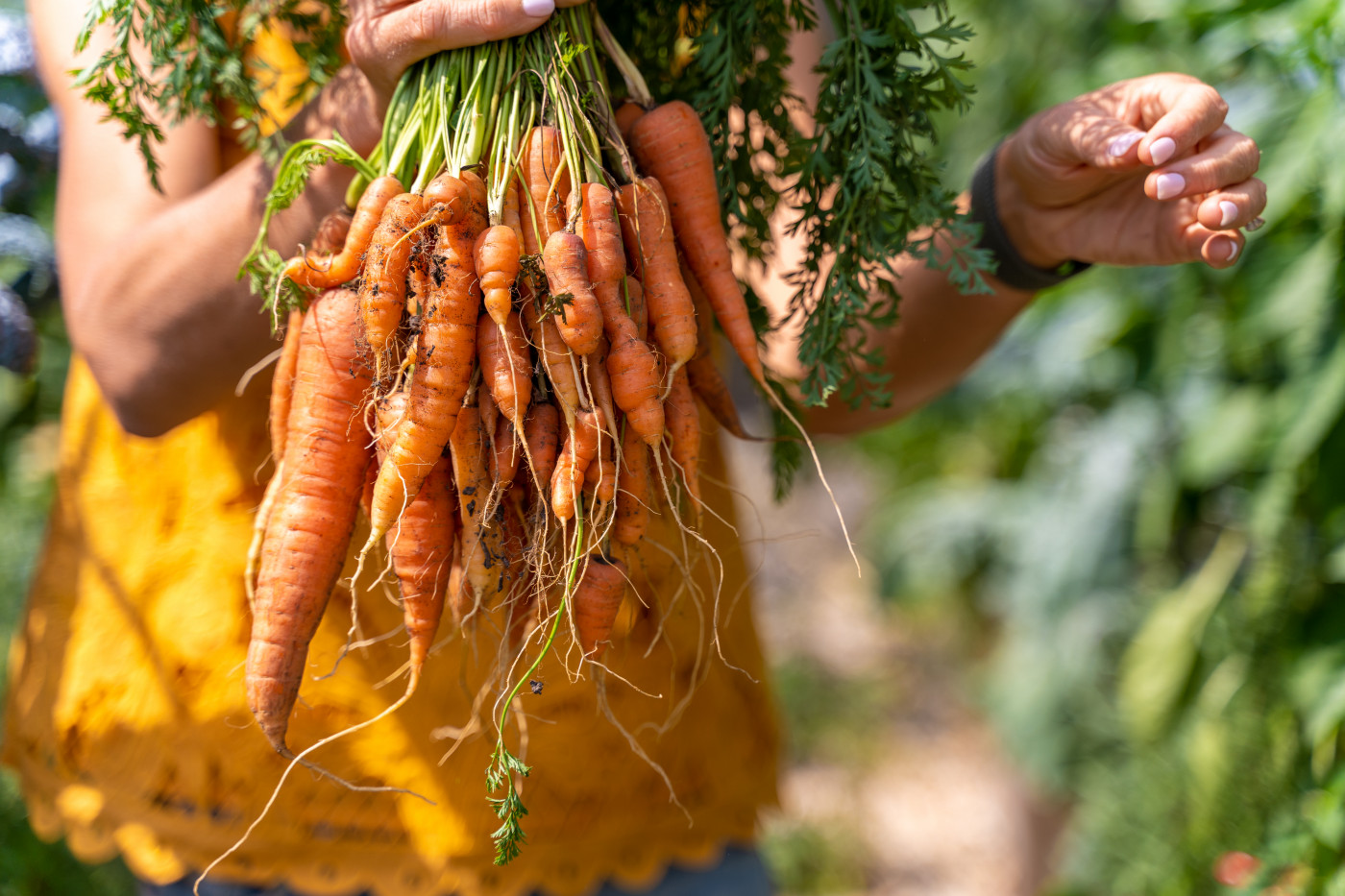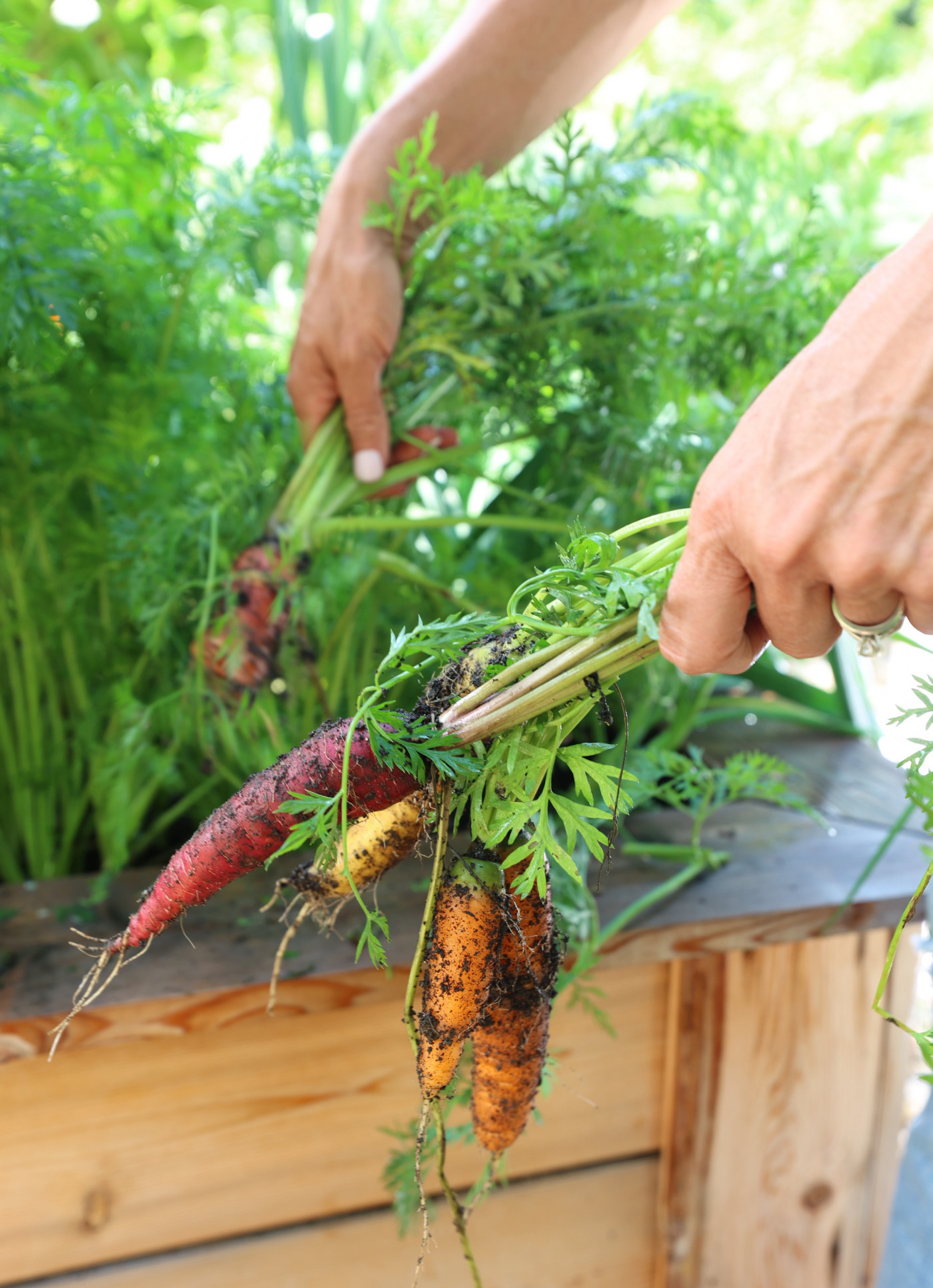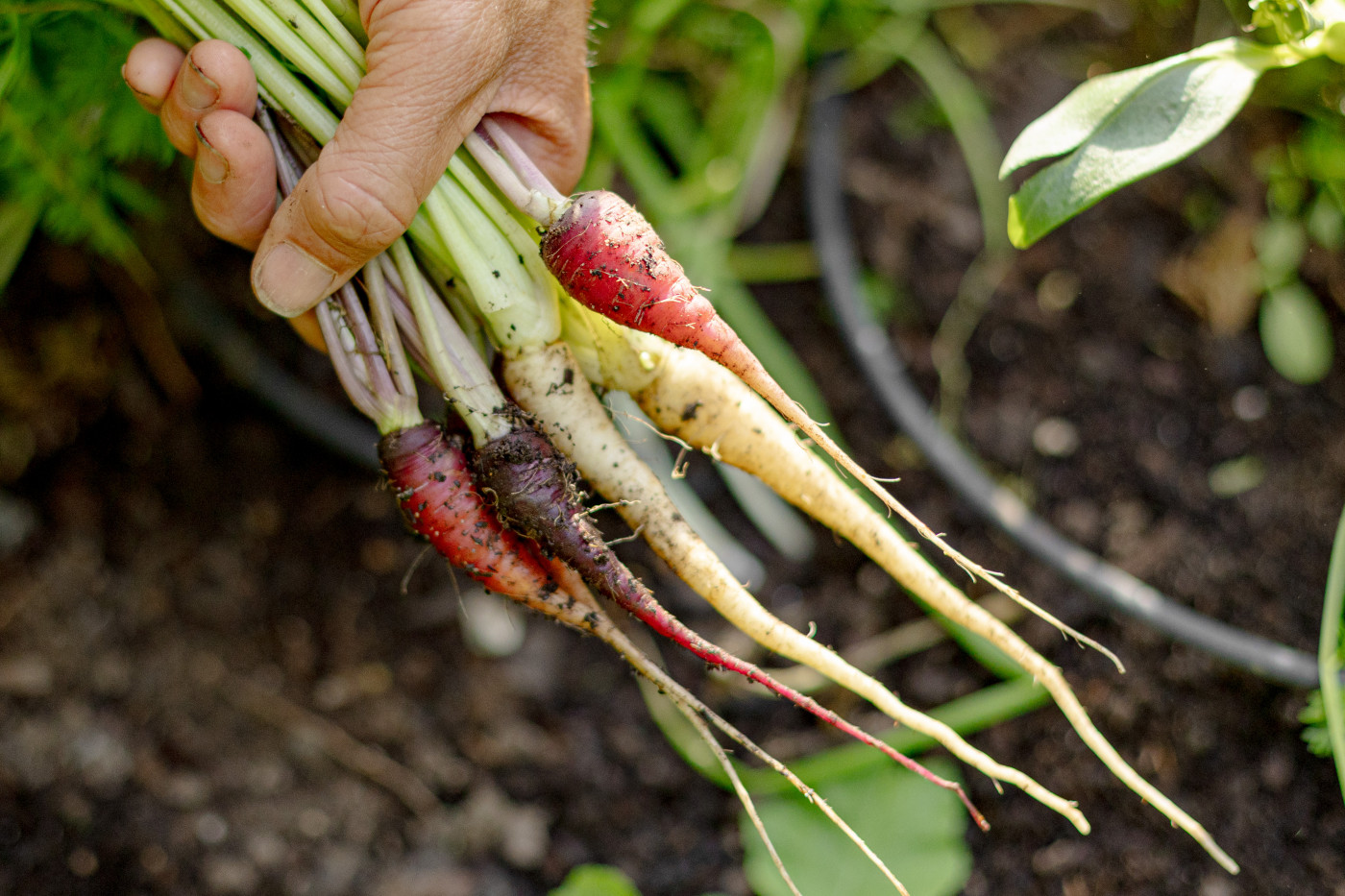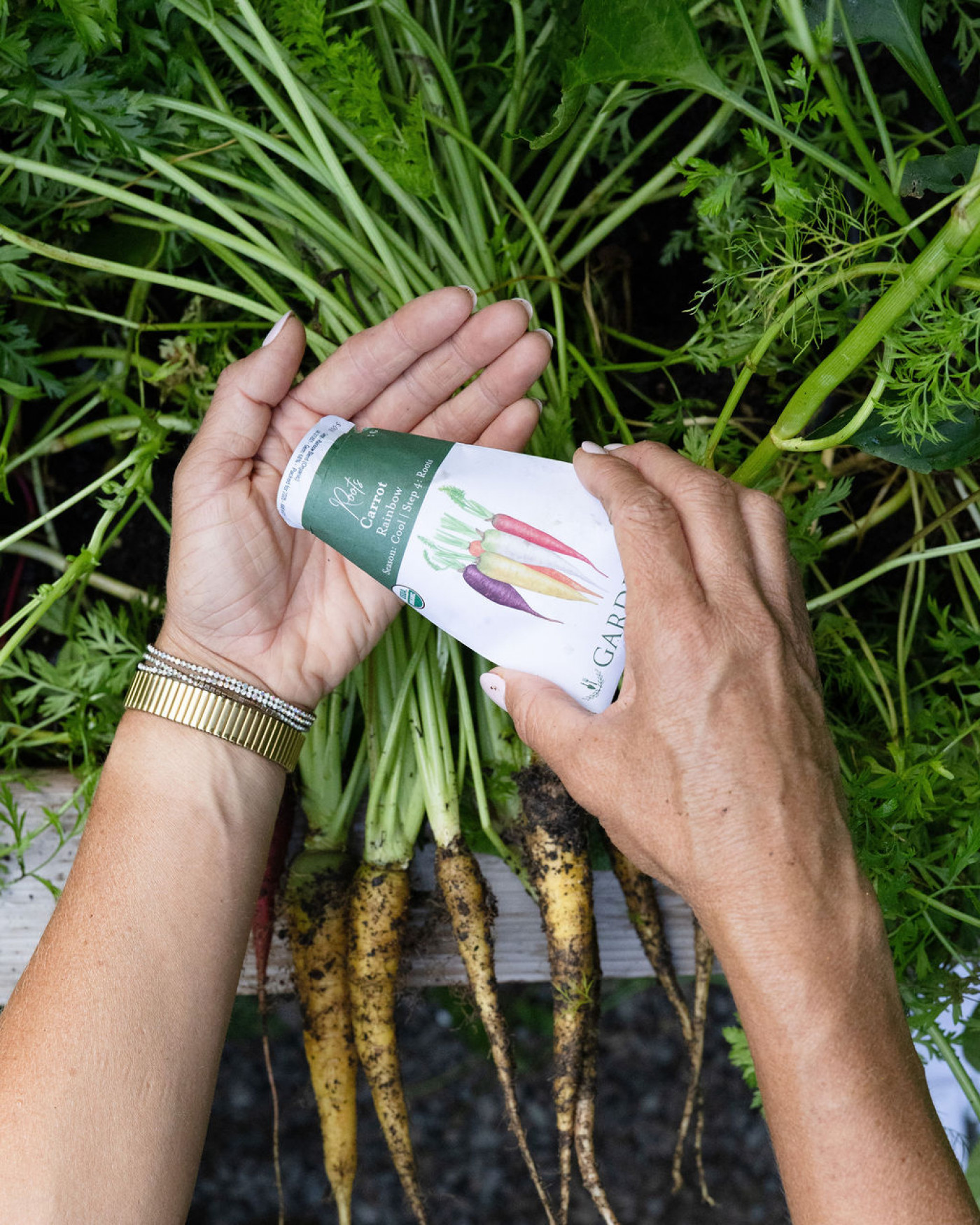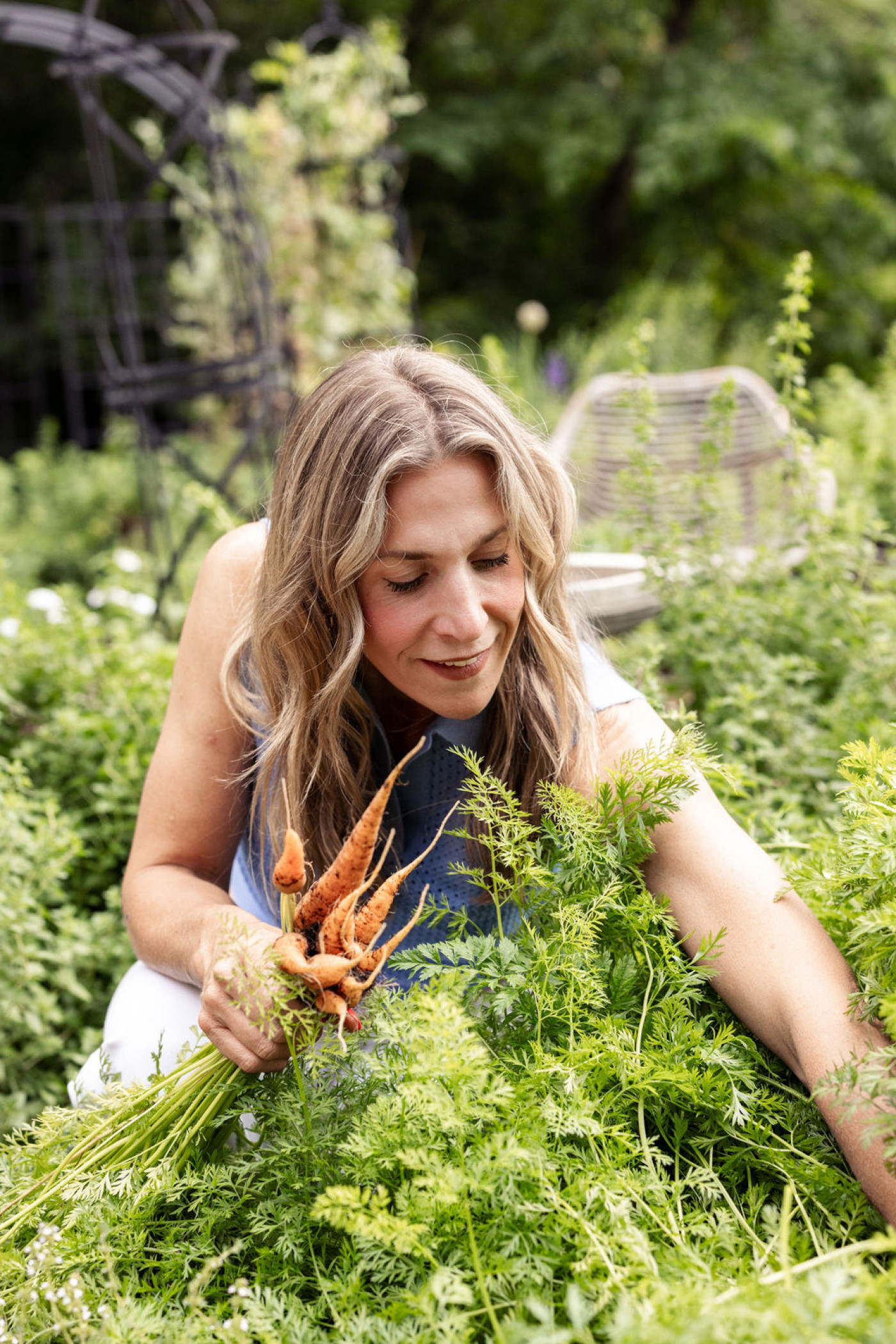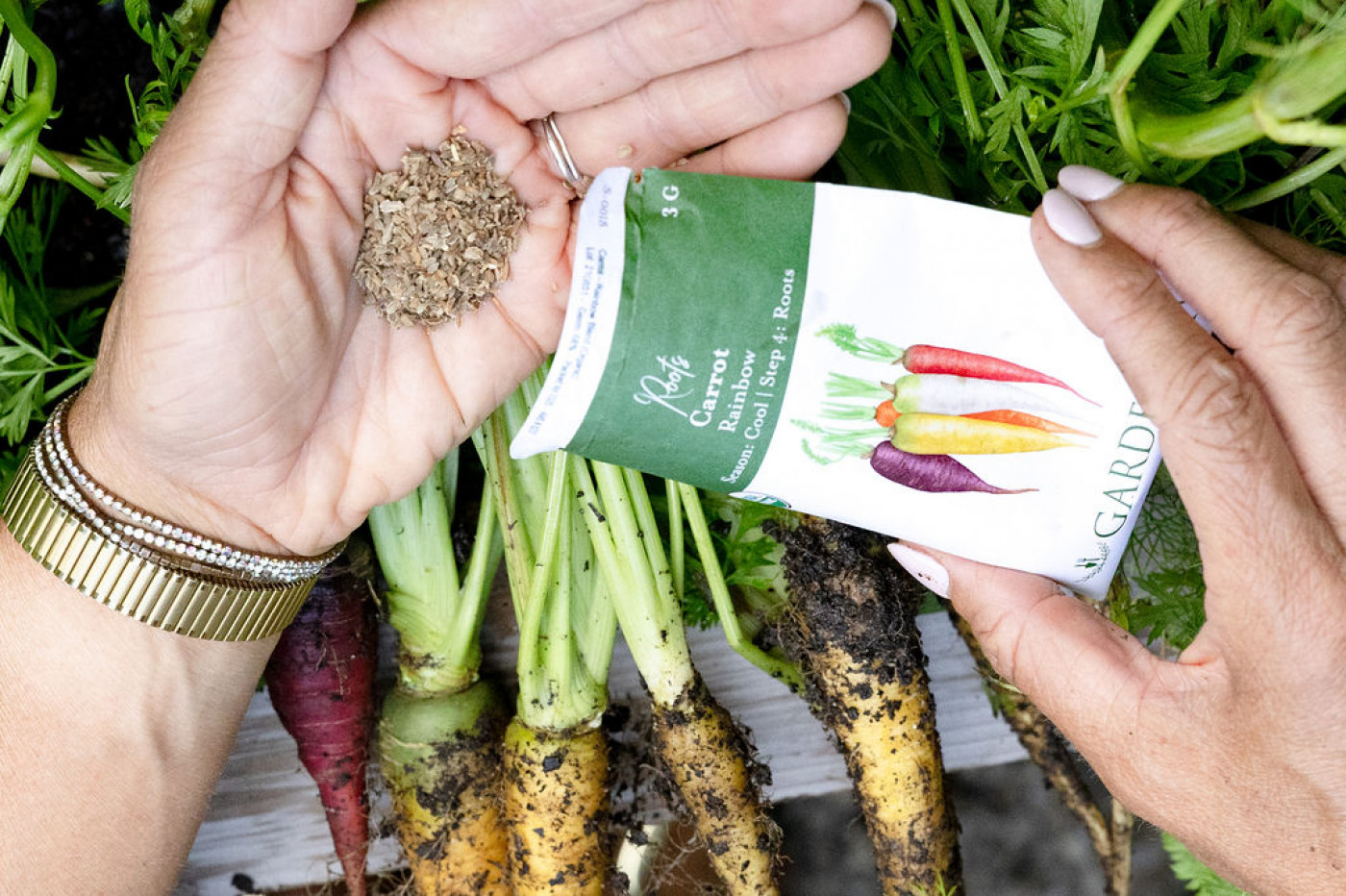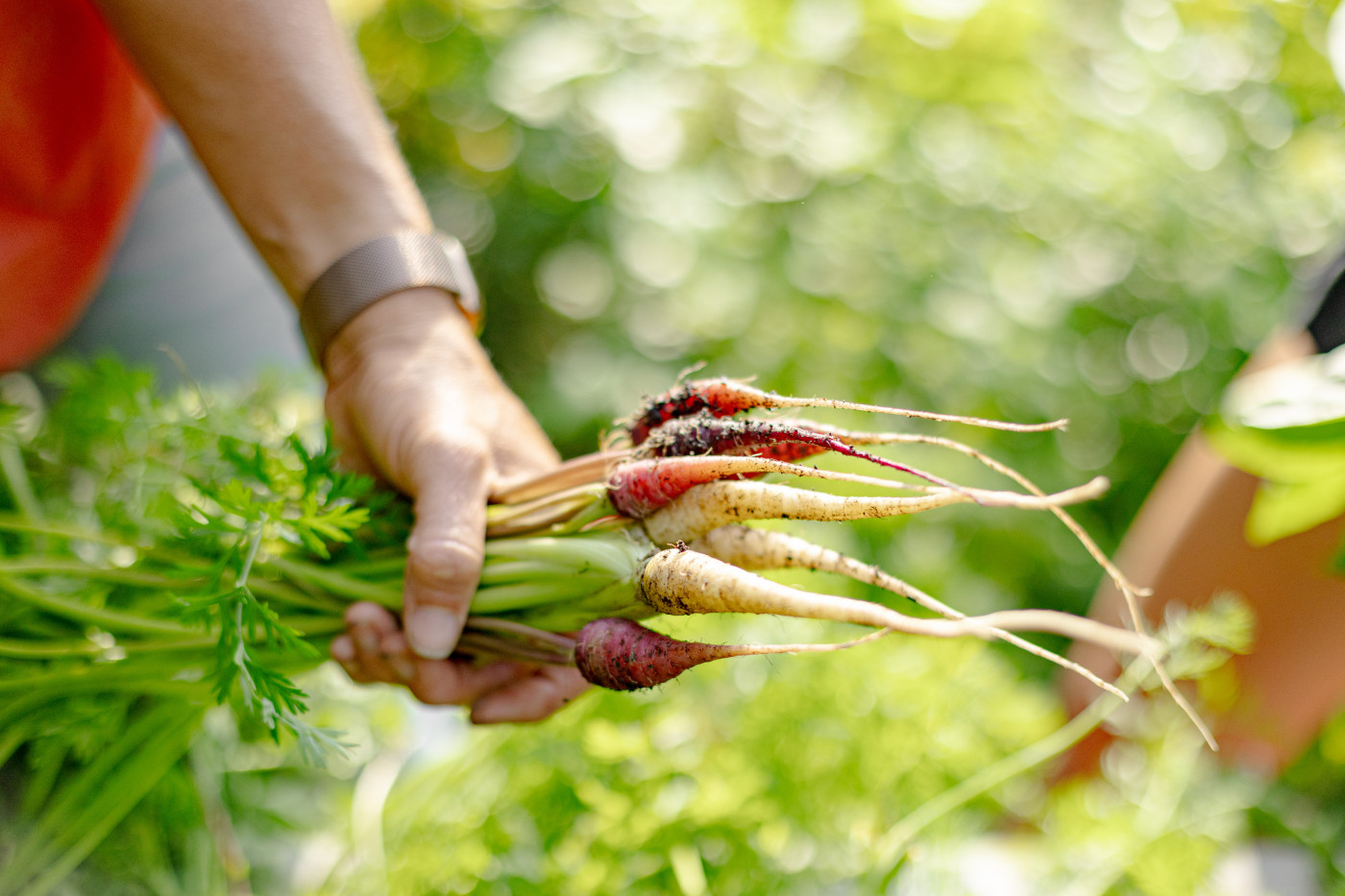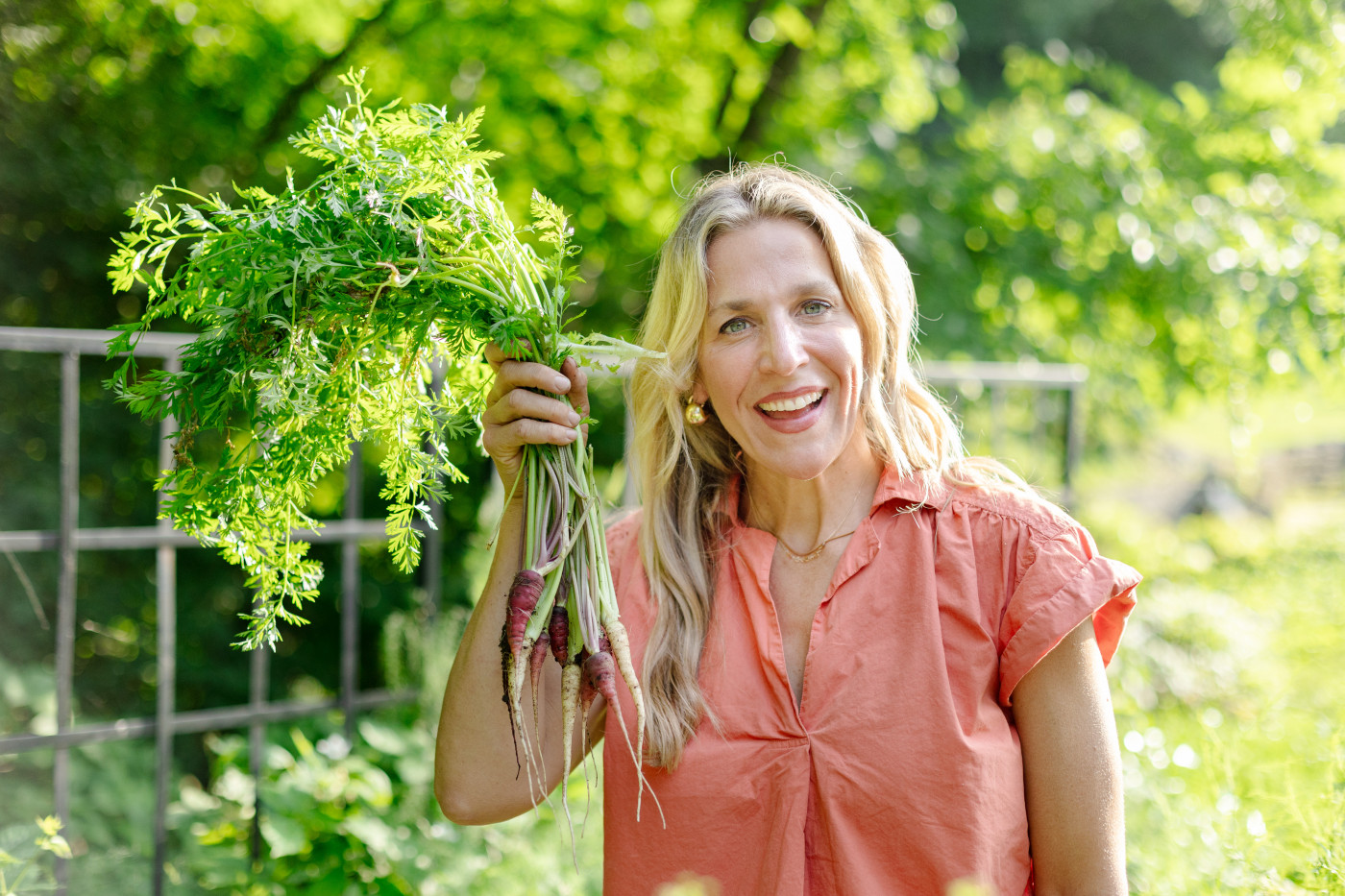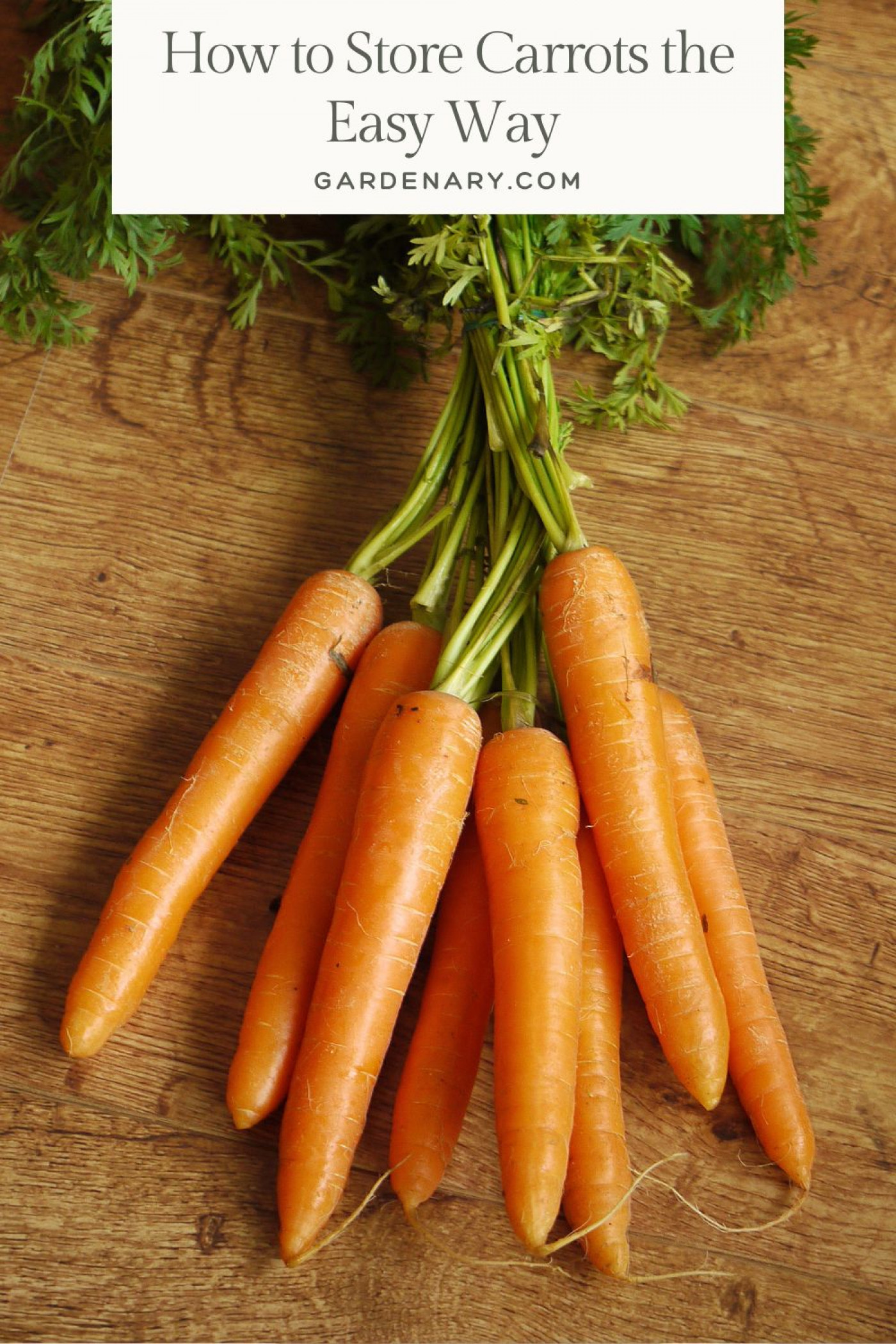At a Glance
- Learn the simple steps to harvest, trim, and prepare carrots for storage so they stay crisp and sweet. Skipping the wash and handling them gently makes all the difference in keeping them fresh.
- Explore different storage methods, from the back of your fridge to boxes of damp sand or even leaving them in the garden under mulch. Each option helps you enjoy carrots long after the growing season ends.
- Get tips on checking stored carrots, avoiding common mistakes, and using them in soups, roasts, and snacks. With these easy methods, you’ll never worry about having too many carrots again.


Start Your Garden the Easy Way
Get growing with 10 foolproof seed varieties, a 120-page gardening guide, planting plans, and step-by-step video lessons—all designed to help you succeed. The Easy Garden Kit makes it simple, fun, and affordable to bring fresh food and flowers to your backyard.
How to Store & Preserve Carrots the Easy Way After a Garden Harvest
Carrots might just be the most cheerful vegetable in the garden. They’re colorful, crunchy, and are one of those crops that feel like buried treasure when you pull them up. My kids never complained about harvesting carrots; they actually fought over who got to tug the next one out of the soil.
The real fun, though, comes after harvest. If you’ve ever grown a big crop of carrots, you know the thrill of filling a crate with more than you can possibly eat in one week. The good news? Carrots are one of the easiest vegetables to store, and they’ll keep for months if you handle them right.
I’ve personally pulled carrots from my garden in November and still been cooking with them the following April. That’s six months of garden-to-table goodness, all thanks to a few simple storage tricks. In this post, I’ll walk you through exactly how I keep my carrots fresh the easy way—no root cellar required.
Why Carrots Are Perfect for Storing
Carrots belong to a wonderful category of vegetables called “storage crops.” Like potatoes, beets, and onions, carrots are built to last. Nature designed their roots to sit underground for months, pulling up energy and sugars to sustain the plant. That same design makes them excellent candidates for long-term storage after harvest.
Some reasons I love storing carrots:
- They stay crisp for months when stored properly.
- They’re versatile in the kitchen—you can roast, steam, shred, or snack on them raw.
- They don’t take up much space compared to other bulky root crops.
- They actually get sweeter in cool conditions, making stored carrots taste amazing.
In short, carrots are one of the most rewarding crops you can grow because you get to enjoy them long after the garden season ends.
Step 1: Harvest at the Right Time
Carrots are forgiving, but timing still matters. If you harvest too early, you’ll get baby carrots (which are fun, but not great for storage). If you wait too long, they may get woody and lose flavor.
My routine is simple: I dig around the top of a carrot with my finger to check its size. If it looks thick enough, I pull one or two to test. When most of them look ready, I go ahead and harvest the whole bed.
Tip from experience: Use a garden fork to loosen the soil first. Yanking carrots out of compact soil is a surefire way to snap them in half. Talk about disappointing after all of that effort!
Step 2: Trim the Greens
The first thing you’ll want to do is remove the leafy tops. Carrot greens are edible, but if you leave them attached, they’ll pull moisture out of the roots and make your carrots limp.
I usually snip the greens off about half an inch above the carrot using garden scissors. Sometimes I save a handful of greens for pesto, but most often they go straight into my compost pile.
Step 3: Skip the Wash
This part always surprises people: don’t wash your carrots before storage. It feels counterintuitive, but leaving that thin layer of soil actually helps them last longer. Washing scrubs away the natural protective coating on the carrot skin, which makes them more prone to rotting.
If the carrots are really muddy, I let them dry for a few hours on a tarp in the garage. Once the dirt is crumbly, I gently brush it off with my hands. That’s it—no water needed.
Interesting fact: Back in the frontier days, during the 1800s, families would store carrots in boxes filled with dirt. They would layer like a lasagna, carrots, dirt, carrots, dirt, and this method would preserve the carrots to help them survive through the winter. This was crucial because during the coldest parts of the year, they were unable to farm fresh crops, so they relied on storing vegetables properly during the fall.
Step 4: Choose the Right Storage Method
Here’s where you have options. I’ll walk you through a few of my favorites, depending on how much space you have and how long you want your carrots to last.
Refrigerator Storage (Easiest for Most People)
- Place unwashed carrots in a plastic bag.
- Poke a few holes in the bag to allow airflow.
- Store the bag in the crisper drawer or back corner of your fridge.
This method is my go-to. It’s simple, it works, and it doesn’t require fancy equipment.
Sand or Sawdust Storage (Traditional Method)
If you’ve got a cool basement or garage, you can layer carrots in damp sand or sawdust inside a box. Some people also use peat moss. The medium insulates them and keeps the humidity steady. This is a classic homesteading trick and can keep carrots fresh until spring. Basically, you're mimicking their natural underground environment as if they had never been harvested.
Garden Bed “Storage”
Sometimes, the easiest storage is no storage at all. In mild climates, you can leave carrots in the ground until the soil threatens to freeze. Cover them with a thick layer of straw or leaves, and dig them up as needed.
Step 5: Find the Coolest Spot You Can
Carrots store best in temperatures just above freezing (32–40°F or 0–4°C) with high humidity. If you don’t have a root cellar, the back of the fridge is the next best thing.
In my house, the crisper drawer or the bottom shelf of the refrigerator has become the “carrot zone.” I just tuck the bags there and forget about them until I need them for a meal.
Step 6: Check on Them Regularly
Even with the best methods, a few carrots will always go soft or start to rot. That’s normal. The trick is to catch them early before they spread their misery to the rest.
Every few weeks, I open the bag and give it a quick look. If one carrot is mushy, out it goes (and yes, it smells as bad as you’d imagine). The rest get a pat on the back and go back into storage.
Ways to Use Stored Carrots
One of the best parts of having a steady carrot stash is how versatile they are. Here are some of my favorite ways to use them after months in storage:
- Roasted carrots with herbs — simple and sweet.
- Carrot ginger soup — my go-to in January when I need a warm hug in a bowl.
- Carrot muffins or bread — perfect for sneaking veggies into breakfast.
- Fermented carrots — crunchy, tangy snacks that kids actually love.
- Carrot top pesto — yes, even those greens can be delicious if you save them.
There’s really no such thing as too many carrots when you’ve got storage figured out.
Our Easy Garden Kit includes a recipe book with a section on carrot recipes.


Learn the Easiest Way to Grow Your Own Food
The Easy Garden Kit makes growing your own food simple and stress-free. Everything you need for success is included: the top 10 easiest seeds to grow, a detailed video course, a raised bed setup guide, planting plans, a growing guide, and a delicious recipes book for when you harvest.
Common Mistakes to Avoid
I’ve learned these the hard way:
- Don’t wash before storage. Clean as you go, not all at once.
- Don’t store with apples or pears. These fruits give off ethylene gas that makes carrots bitter.
- Don’t leave damaged carrots in the bag. One bad root can ruin a whole batch.
- Don’t skimp on air holes. Without them, moisture builds up and rot spreads fast.
Avoiding these mistakes will save you from soggy, smelly surprises.
Learn How to Grow Your Own Carrots
Final Thoughts
So, that’s my method for how to store carrots the easy way after a garden harvest. Harvest at the right time, trim the greens, skip the wash, and stash them in a cool spot. Check on them every once in a while, and you’ll be enjoying your carrot harvest long after the garden has gone to sleep.
I can’t tell you how satisfying it is to roast a tray of carrots in the dead of winter, knowing they came from my own garden. It’s a reminder that the work I did in the soil months earlier is still feeding me today.
If you’ve got carrots piling up in your garden baskets, don’t worry—you don’t have too many. You’ve got just enough. And now you know exactly how to keep them fresh, crisp, and delicious the easy way.

